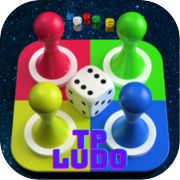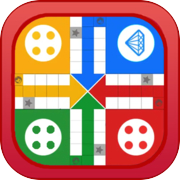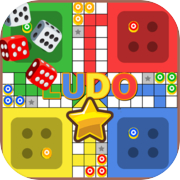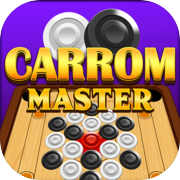TP Ludo Play With Friends 1/4

Introduction
Ludo, often referred to as "Parcheesi" or "Mensch ärgere Dich nicht" in various parts of the world, is a timeless board game that has captured the hearts of millions for generations. This classic game, which blends strategy and luck, continues to be a favorite pastime for people of all ages. In this article, we will delve into the history, rules, and enduring popularity of the beloved game of Ludo.
A Brief History
The origins of Ludo can be traced back to ancient India, where it was known as "Pachisi." This game was initially created in the 6th century as a representation of an epic battle from the Indian epic, Mahabharata. Over time, it evolved and spread to different cultures and regions, adapting different rules and names.
The game arrived in England during the late 19th century, where it was patented under the name "Ludo" in 1896. Since then, it has become a worldwide sensation, captivating players of all ages and backgrounds.
Game Setup
Ludo is a simple yet engaging game that can be played by two to four players. The game board consists of a cross-shaped track with four starting areas, a central square, and a home column for each player. Players take turns rolling a six-sided die and moving their tokens along the track. The objective is to be the first to move all of your tokens from the starting area to your home column.
Rules and Gameplay
Starting: Each player selects a color and places their four tokens in their respective starting area.
Rolling the die: Players take turns rolling a six-sided die. The roll determines the number of spaces they can move their tokens.
Moving tokens: Tokens are moved clockwise around the track. To enter the track, a player must roll a 6. After that, they can move their token out of the starting area and onto the track. Tokens move the rolled number of spaces, and players can split the move among their tokens.
Capturing: If a player's token lands on a space occupied by an opponent's token, the opponent's token is captured and sent back to the starting area.
Safety zones: The central square and the home column are safe zones. Tokens in these zones cannot be captured by opponents.
Reaching home: To get a token into the home column, a player must roll the exact number needed to reach it. The player who gets all four tokens home first wins.
Why Ludo Remains Popular
Ludo's enduring popularity can be attributed to several key factors:
Accessibility: Ludo is incredibly easy to learn, making it accessible to players of all ages and skill levels.
Social Interaction: Ludo is a social game that encourages interaction and bonding among friends and family members.
Balance of Luck and Strategy: The game combines elements of luck (rolling the die) and strategy (making choices about which tokens to move and where to position them). This balance keeps the game exciting and unpredictable.
Nostalgia: Many people have fond childhood memories of playing Ludo, and these nostalgic feelings continue to draw players back to the game.
Adaptability: Ludo can be played on various surfaces, including traditional game boards, cardboard, or even mobile apps. It's a game that can be enjoyed anywhere.
Conclusion
Ludo, with its rich history, straightforward rules, and enduring appeal, is a game that transcends generations. Whether you're enjoying it with family and friends on a rainy afternoon or playing a digital version on your smartphone, Ludo continues to bring joy and entertainment to people all over the world. It's a reminder that sometimes the simplest games can provide the most timeless fun. So, the next time you're looking for a game to play, consider dusting off that Ludo board and reliving the joy of this classic pastime.
Ludo, often referred to as "Parcheesi" or "Mensch ärgere Dich nicht" in various parts of the world, is a timeless board game that has captured the hearts of millions for generations. This classic game, which blends strategy and luck, continues to be a favorite pastime for people of all ages. In this article, we will delve into the history, rules, and enduring popularity of the beloved game of Ludo.
A Brief History
The origins of Ludo can be traced back to ancient India, where it was known as "Pachisi." This game was initially created in the 6th century as a representation of an epic battle from the Indian epic, Mahabharata. Over time, it evolved and spread to different cultures and regions, adapting different rules and names.
The game arrived in England during the late 19th century, where it was patented under the name "Ludo" in 1896. Since then, it has become a worldwide sensation, captivating players of all ages and backgrounds.
Game Setup
Ludo is a simple yet engaging game that can be played by two to four players. The game board consists of a cross-shaped track with four starting areas, a central square, and a home column for each player. Players take turns rolling a six-sided die and moving their tokens along the track. The objective is to be the first to move all of your tokens from the starting area to your home column.
Rules and Gameplay
Starting: Each player selects a color and places their four tokens in their respective starting area.
Rolling the die: Players take turns rolling a six-sided die. The roll determines the number of spaces they can move their tokens.
Moving tokens: Tokens are moved clockwise around the track. To enter the track, a player must roll a 6. After that, they can move their token out of the starting area and onto the track. Tokens move the rolled number of spaces, and players can split the move among their tokens.
Capturing: If a player's token lands on a space occupied by an opponent's token, the opponent's token is captured and sent back to the starting area.
Safety zones: The central square and the home column are safe zones. Tokens in these zones cannot be captured by opponents.
Reaching home: To get a token into the home column, a player must roll the exact number needed to reach it. The player who gets all four tokens home first wins.
Why Ludo Remains Popular
Ludo's enduring popularity can be attributed to several key factors:
Accessibility: Ludo is incredibly easy to learn, making it accessible to players of all ages and skill levels.
Social Interaction: Ludo is a social game that encourages interaction and bonding among friends and family members.
Balance of Luck and Strategy: The game combines elements of luck (rolling the die) and strategy (making choices about which tokens to move and where to position them). This balance keeps the game exciting and unpredictable.
Nostalgia: Many people have fond childhood memories of playing Ludo, and these nostalgic feelings continue to draw players back to the game.
Adaptability: Ludo can be played on various surfaces, including traditional game boards, cardboard, or even mobile apps. It's a game that can be enjoyed anywhere.
Conclusion
Ludo, with its rich history, straightforward rules, and enduring appeal, is a game that transcends generations. Whether you're enjoying it with family and friends on a rainy afternoon or playing a digital version on your smartphone, Ludo continues to bring joy and entertainment to people all over the world. It's a reminder that sometimes the simplest games can provide the most timeless fun. So, the next time you're looking for a game to play, consider dusting off that Ludo board and reliving the joy of this classic pastime.
Available on devices:
- Android
- Smart TV































































